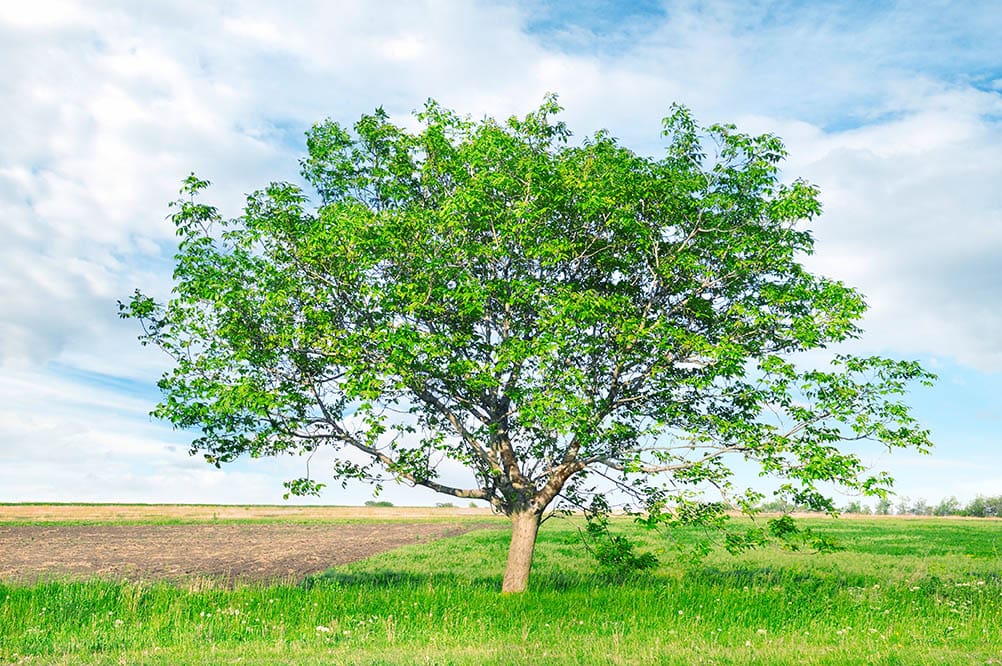When Is the Best Time to Plant a Tree? What You Should Know
-
Codee Chessher
- Last updated:

If you’re interested in planting a tree, you may be a bit confused about when to plant it. Many people advise planting in the spring, while others suggest planting just after the leaves drop in early fall. The truth is that you can plant at either of these times, depending on your local climate.
Planting trees may seem like a daunting task, but it’s not as difficult as you might think. Let’s check out what you need to know about planting a tree so you have the best chance of success.
Select a Suitable Tree Type for Your Climate
Trees are always a great addition to any landscape but finding the right type of tree can be challenging. You must choose a tree that both suits your climate and the location you want to plant. Let’s look at some of the major tree types and what they can offer.
- Deciduous shade trees can lend shade to a home during harsh summers.
- Evergreen trees can be used as a privacy screen or windbreak.
- Fruit trees produce delicious fruit that both you and nearby animals enjoy.
The tree type isn’t the only major decision you must make. For your tree to thrive, it has to be in a suitable area. Let’s check out some relevant factors you should consider when choosing a location for your tree to live.

- Soil type and pH
- How much natural sunlight the area receives
- Extreme temperatures as determined by the local climate
- Soil drainage
- Local pest populations
Every tree needs well-draining soil, but every tree will also vary on what type of soil it prefers. Apple trees, for example, can tolerate a wide range of soils, but they prefer sandy or loamy soil. Maple trees, on the other hand, dislike dry and rocky soil.
You should research what types of trees do well in the type of soil you have available to plant in. Local tree nurseries typically have suggestions on what types of trees do well in your area.
Decide When to Plant and Establish a Location
Spring and fall are great times to plant trees in most climates because trees are generally dormant in cool temperatures. Trees with bare roots do better in the spring, while burlapped trees or trees in containers will do better in the fall. Depending on which season you plant in, you should plant before or after the last freeze of the year.
If you’re in the US, you should call 811 before you plan on breaking ground. Someone will come out for free to mark where your underground utility lines are or tell you where they are over the phone. Avoid digging too close to underground lines, as they can interfere with your tree’s development.
Next, check local zoning laws and consult your local authorities to see if they have rules about digging holes or planting trees. Many homeowners associations (HOA), for example, have rules about planting trees. Now that you know where to not dig, choose an open, flat area away from power lines or underground lines to dig and plant your tree.

Plant Your Tree
To plant your tree, first water the soil where you’re going to plant it, then dig a hole two to three times the diameter of your tree’s root ball. You can either use a tarp to gather the excess soil or keep it by the hole, but you will need it to fill the hole in. The depth should be about the same as the root ball, too.
Carefully put your tree’s root ball in the hole until it’s resting on the ground and then shovel in soil. You want to make sure the root flare, which is where the root ball meets the trunk, is just above the soil. Once your tree is firmly in the ground, lightly tamp the soil around it and make sure it’s still moist.
Ensure the Tree Gets Ample Sunlight and Sufficient Water
Young trees are the most vulnerable because they don’t have an established root system yet, so it’s absolutely essential that you choose a place where your tree will get enough sunlight. Most trees require at least 6 full hours of uninterrupted sunlight to thrive.
As far as water, young trees will need more than their fully-grown counterparts. Apple trees typically need 1 inch of rain or water per week, so a juvenile apple tree will likely need more.
Every tree is different, but you should try to not overwater it. It may be difficult to tell how much is too much, but as a rule of thumb, don’t water the tree until the soil is completely dry. Then, you should water the soil surrounding your tree until it’s thoroughly wet. If excess water is trickling away or pooling, that means you’ve overwatered.

Mulch if Desired
Mulch adds a very useful protective barrier between your tree’s roots and the surrounding soil. It helps the roots retain water, protects against weeds, and helps regulate root and soil temperatures. In short, it’s very handy to keep a growing tree safe. To use mulch, add a 2–3-inch layer around the base of your tree.
You don’t have to use mulch at all if you don’t want to, or you can add it later when the tree is more mature.
Conclusion
Planting a tree is a great way to add some visual interest to your landscaping, act as a privacy barrier, or to provide you with great-tasting fruit. For most trees, the ideal time to plant is either early spring, after the last freeze, or in the fall before the last freeze.
Featured Image Credit: Dmytro Zinkevych, Shutterstock
Contents
